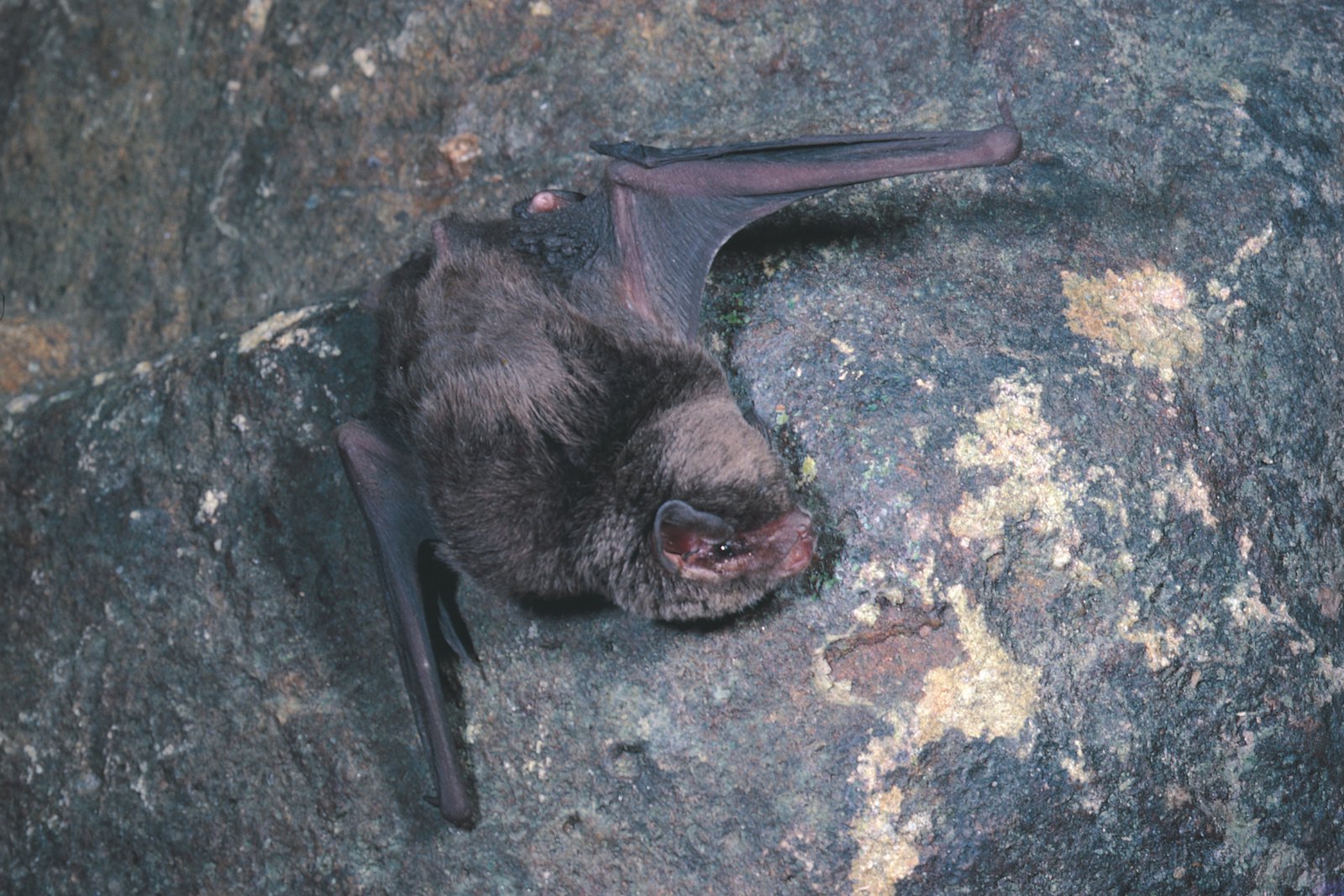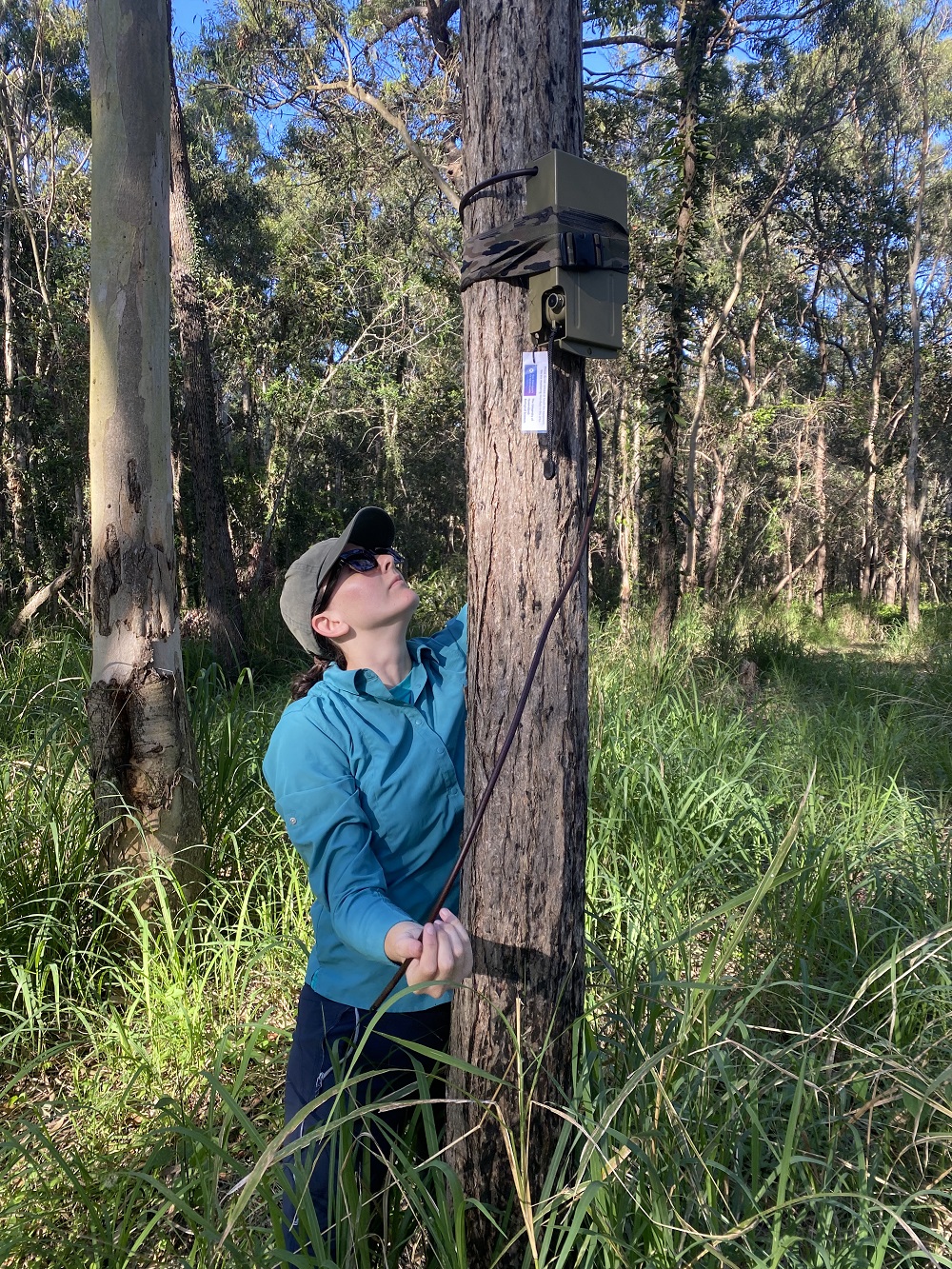
Artificial light is having a variety of impacts on the natural behaviour of nocturnal microbats in Brisbane, according to research from The University of Queensland.
The study, conducted by UQ honours student Rani Davis, involved placing acoustic detectors in 10 bushland and parkland areas across Brisbane, recording the echolocation calls of two species of microbats at increasing distances from artificially lit pathways.
“I focused on two quite different species of bat: the white-striped free-tailed bat (Austronomus australis), and the little bent-wing bat (Miniopterus australis), both no bigger than 10 centimetres tall,” Ms Davis said.
“And, in a bit of a shock, the results show that artificial light affected them completely differently.
“M. australis was much less active in well-lit areas compared to dark areas, even up to 50 metres away from lights, indicating that this slow-flying species may avoid lit areas out of a fear of predation.
“While A. australis was largely unaffected by light – in fact, the species was slightly more active closer to streetlights, indicating that their faster flight allows them to use well-lit areas to forage without being preyed upon by owls.
“This just shows how the solution to this problem isn’t one-size-fits-all, as all species use the light differently.
“We need to use this kind of data to inform our public policy – I’m not suggesting a complete removal of light, rather, a reduction of light spill through improved lighting designs and urban planning.”

Microbats use echolocation to navigate and hunt, with their echolocation calls differing in shape and frequency (kHz).
Using these acoustic detectors, Ms Davis was able to identify which species were present and how their flight activity changed with increasing distance from streetlights.
“This is the first study to investigate how the activity of Australian insectivorous bats species changes with distance to artificial light source,” she said.
“While streetlights provide an ideal hunting ground for bats by attracting insects, they also improve visibility for microbat predators, like owls.
“In urban areas flooded with streetlights, light-sensitive species may experience limited ability to move across the landscape, which could lead to their populations becoming stressed.”
Currently, almost a quarter of Earth’s land surface is polluted by artificial light, with that number expected to increase as populations grow and urban development expands.
Despite its pervasiveness, Ms Davis said artificial light is an often-overlooked urban threat.
“Artificial light can fragment the environment for nocturnal animals in a similar way that structural features like roads and fences can,” she said.
“To further protect urban wildlife, we need to think about all threats these species face and how to best minimise them, not just those most obvious.
“One of the main goals of my project is to help inform the placement of streetlights around important habitats and corridors to minimise harm on light-sensitive species.
“Obviously, this conflicts with the need to keep lighting at safe levels for human use at recreational parks, but a balance can certainly be struck.
“I believe the results of my study provide valuable food for thought and an effective method for urban planners to conduct thorough impact reports.
“This would help minimise the evident impacts of artificial light on our nocturnal species.”
Ms Davis is presenting the research at the Ecological Society of Australia Conference 2023.
Media: Ms Rani Davis, rani.davis@uq.net.au, +61 423 595 113; Faculty of Science Media, science.media@uq.edu.au, +61 438 162 687.



